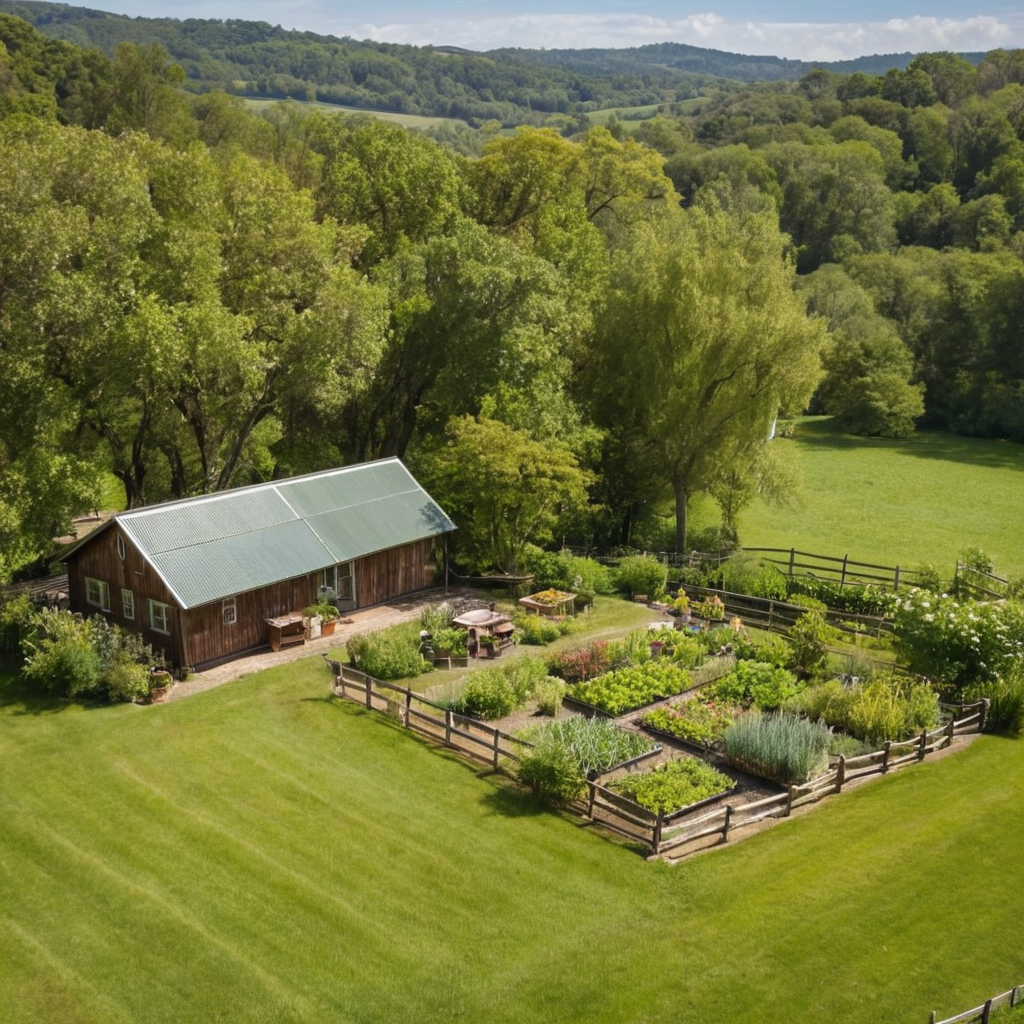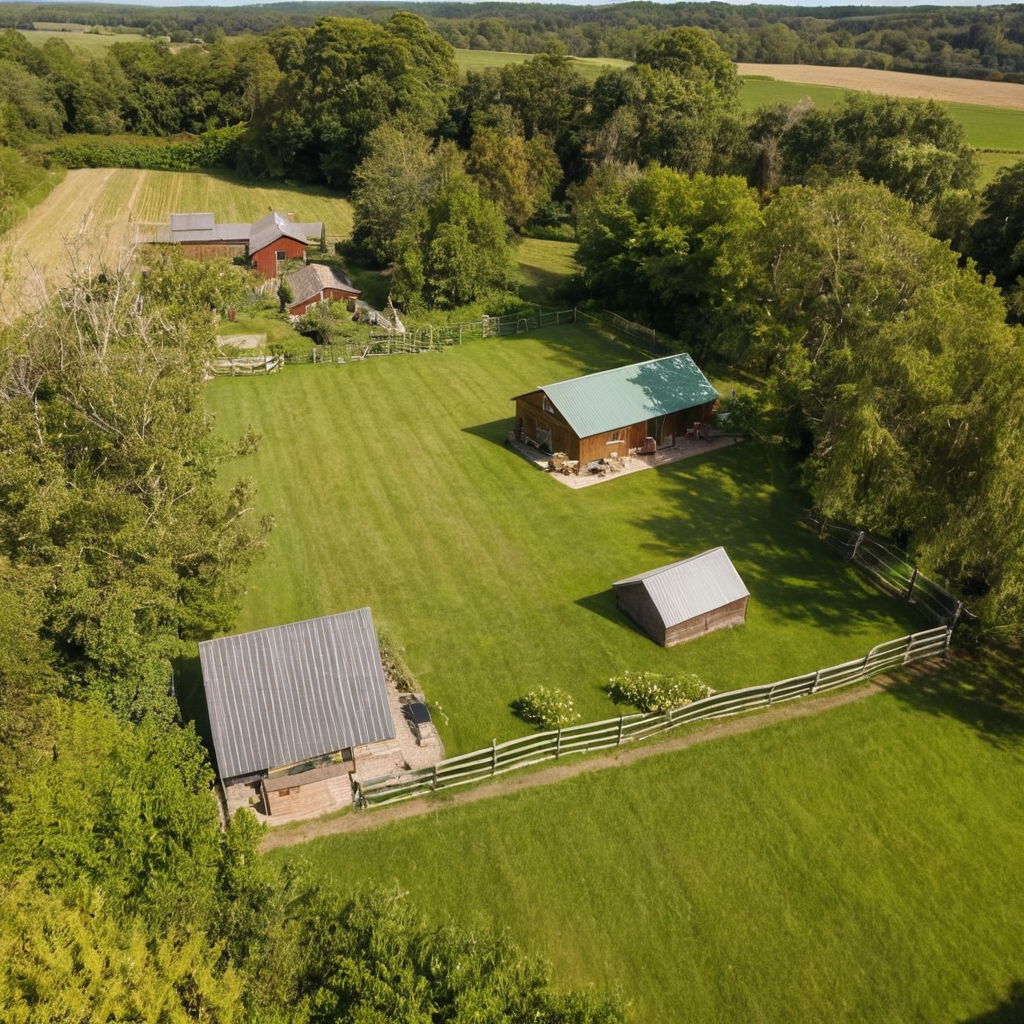The real estate market in the United States has historically been a critical component of the economy, serving as a barometer for economic health and a platform for investment.

As the landscape continues to evolve, understanding the future of the real estate market is essential for both investors and homebuyers alike. By 2025, several factors, such as shifts in demand, technological advancements, and changing societal needs, will significantly shape the market.
This article explores the real estate landscape in the United States in 2025, including emerging trends, challenges, and opportunities that investors, homebuyers, and developers can expect.
Current State of the U.S. Real Estate Market

Before diving into future projections, it’s important to understand where the U.S. real estate market stands in 2025. As of the early 2020s, the real estate market in the U.S. experienced dramatic shifts due to the COVID-19 pandemic, supply chain disruptions, and changing work dynamics. The pandemic fueled interest in suburban and rural living as remote work became a norm, while urban centers saw a temporary decline in demand. Additionally, rising home prices, low interest rates, and a limited housing supply have made it increasingly difficult for first-time homebuyers to enter the market.
The housing market has been characterized by heightened demand and limited inventory, particularly in metropolitan areas. By 2025, these conditions will likely have evolved, influenced by several key factors, including economic recovery, demographic shifts, and technological innovations.
Key Trends in U.S. Real Estate by 2025

- Suburban and Rural Living Continues to Thrive The trend of moving away from urban centers, which started during the pandemic, is expected to persist through 2025. With the rise of remote and hybrid work models, many individuals and families will continue to prioritize larger homes with more outdoor space, which suburban and rural areas provide. These regions offer affordability compared to high-cost cities like New York and San Francisco, and their proximity to metropolitan areas makes them ideal for people looking for a balance of convenience and comfort.
Additionally, as remote work technology continues to improve, businesses are likely to adopt permanent hybrid models, further increasing demand for housing outside city limits. Many smaller cities and towns will experience significant growth, making them attractive options for those looking to escape the crowded urban environments.

- Affordable Housing Crisis Remains a Challenge Despite the boom in suburban and rural housing, the affordable housing crisis will remain one of the most pressing issues for the U.S. real estate market by 2025. With rising home prices, limited inventory, and inflationary pressures, many first-time homebuyers will find it increasingly difficult to secure affordable housing in major cities. This issue is especially pronounced in high-demand areas such as California, New York, and Florida.
To combat this issue, there is likely to be an increased push for government intervention, including the implementation of policies to promote affordable housing development. Additionally, private sector developers may focus on creating more affordable housing units, utilizing new construction technologies like modular homes, which can help reduce costs and increase supply.
- Technological Integration in Real Estate Transactions By 2025, technology will play a central role in the real estate process, from buying and selling homes to property management. Real estate platforms and online tools will become even more integrated into the homebuying experience, enabling consumers to browse listings, schedule virtual tours, and even close deals without ever visiting a physical property.
The rise of blockchain technology will further transform real estate transactions by reducing fraud, increasing transparency, and streamlining the buying process. Smart contracts, which are self-executing contracts with the terms of the agreement directly written into code, could become commonplace by 2025. This would allow for faster, more efficient transactions without the need for intermediaries.
Additionally, artificial intelligence (AI) will continue to improve property searches and valuations. AI-powered tools will analyze vast amounts of data to predict market trends, assess property values, and even recommend ideal homes based on user preferences.
- Sustainability and Green Building Practices As environmental concerns continue to gain attention, sustainability will become a central theme in U.S. real estate by 2025. The demand for energy-efficient homes and green building materials will rise, driven by both consumer preference and stricter regulations on energy use. Homebuyers and renters alike are increasingly looking for properties with eco-friendly features, such as solar panels, energy-efficient appliances, and well-insulated homes that reduce heating and cooling costs.
Developers and investors will be expected to prioritize green building certifications, such as LEED (Leadership in Energy and Environmental Design), when constructing new residential and commercial properties. Additionally, the shift toward renewable energy sources and sustainable building materials will create opportunities in the construction and renovation sectors, benefiting eco-conscious builders, suppliers, and investors.
- Real Estate Investment in Digital and Virtual Spaces In 2025, we may witness the rise of new investment opportunities in the form of virtual real estate. The growing popularity of virtual worlds and metaverse platforms such as Decentraland and The Sandbox has already sparked significant investment in digital land. As more individuals and businesses spend time in these virtual spaces, digital real estate could become a viable asset class for investors.
Virtual property sales and leases are becoming increasingly common, with brands and individuals buying parcels of land within virtual worlds to host events, create virtual stores, or sell digital goods. Investors looking for cutting-edge opportunities may find themselves entering a new frontier of real estate that combines technology, entertainment, and commerce.
Challenges for U.S. Real Estate by 2025

While the real estate market offers promising opportunities, several challenges will persist and require strategic solutions:
- Rising Interest Rates The Federal Reserve’s interest rate policies will continue to have a significant impact on the real estate market. In the face of rising inflation, the Fed may increase interest rates to cool down the economy, which would likely result in higher mortgage rates. This could reduce the affordability of homes and slow down demand, especially among first-time homebuyers.
- Housing Supply Constraints Although the construction of new homes is expected to increase by 2025, the supply will likely still fall short of demand in many markets. Limited inventory, labor shortages in construction, and the high cost of raw materials could make it difficult to address the housing shortage fully. Developers will need to find innovative ways to streamline construction and increase the supply of affordable homes.
- Economic Uncertainty Economic factors such as inflation, unemployment rates, and global events could influence the real estate market in unpredictable ways. Economic slowdowns, recessions, or geopolitical instability could lead to reduced consumer spending and fewer investments in real estate. The market’s ability to weather these challenges will depend on how quickly the economy recovers and adapts to changing global conditions.
Opportunities in U.S. Real Estate by 2025

Despite these challenges, opportunities abound for savvy investors and homebuyers in 2025:
- Property Investment in Growing Suburban Markets As urban centers lose some of their appeal due to remote work and high living costs, suburban areas with strong job markets, good schools, and access to amenities will become hotspots for property investment. Investors can capitalize on rising demand in emerging suburban markets while enjoying more affordable property prices compared to the city.
- Renovation and Flipping The demand for updated, move-in-ready homes will continue to rise, creating opportunities for property renovators and flippers. With many homes in need of modernization, skilled investors can buy properties at lower prices, renovate them, and sell them for a profit.
- Commercial Real Estate in New Growth Sectors Commercial real estate, particularly in industries like healthcare, logistics, and technology, is poised for growth. With the rise of e-commerce, warehouses and distribution centers in key locations will be in high demand. Similarly, medical office buildings and properties for telemedicine and healthcare services will present investment opportunities as healthcare continues to evolve.
- Sustainable Development Projects Developers focused on building energy-efficient homes, commercial properties, and green infrastructure projects will find substantial opportunities in the years ahead. With growing consumer demand for eco-friendly options, investing in sustainable real estate will not only help the environment but also provide long-term financial returns.
Conclusion

The U.S. real estate market in 2025 will be shaped by a combination of economic, social, and technological factors. Remote work, the affordability crisis, and technological advancements in property transactions and smart home technology will transform the way Americans live and invest. While challenges such as rising interest rates and housing supply constraints remain, opportunities in suburban markets, sustainable development, and virtual real estate present lucrative avenues for growth.
By staying informed about emerging trends, understanding market dynamics, and adapting to changing consumer needs, investors and homebuyers can position themselves to thrive in a rapidly evolving real estate market. The next few years will likely be filled with opportunities to shape the future of the U.S. real estate landscape.



